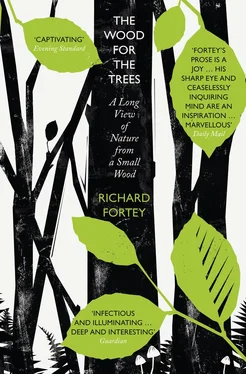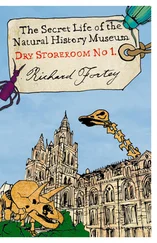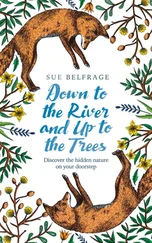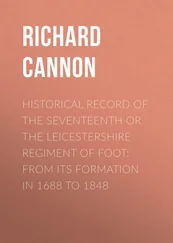Another ghost haunts Lambridge Wood. Nobody has actually seen it, but I am assured its presence has been felt . After dodging the ‘dodgy’ gentlemen, Joanna Cary also avoided ‘the murder cottage’. Nowadays, it is a pretty house adjacent to the barn at the very edge of our wood, but its reputation must have lingered on for decades. As the Henley Standard reported at the time: ‘Friday, December 8th 1893 will always be regarded as a black day in the annals of Henley history.’ The body of the thirty-year-old housekeeper who looked after the farmhouse, Miss Kate Dungey, was found in the woods a few yards from the door with ‘a terrible gash in the left side of the neck, and a number of wounds about the head’.
It was quite the shock headline of the day; the gruesome story was reported prominently as far away as New Zealand. It had all the right ingredients to impress the public. ‘The spot is as remote and lonely as could possibly be found, and there is very little likelihood of cries for help being heard,’ the Standard reported; and naturally ‘it was a dark and miserable evening’. Miss Dungey was an interesting victim, ‘of good figure, had dark hair, and is said to have been good looking’ – moreover, she was an ex-governess for the children of Mr Mash, fruiterer and owner of the house, so she had the trappings of a gentlewoman. ‘Almost all around Henley knew Miss Dungey and speak well of her,’ the newspaper continued. Could robbery be a motive when ‘nothing had been touched in the house, not even the watch on the sitting room chair’? There were signs of a struggle and blood by the front door, so perhaps the grisly killing took place as the poor woman attempted to flee her assailant. A thick, cherry-wood cudgel discovered by the body may have been involved, but something much sharper caused the deep gash.
Over the next month new evidence emerged, as well as rumours that Miss Dungey had a romantic interest in a local married man, details of which never appeared. By 3 January 1894 one Walter Rathall had been arrested for the crime. He had worked as a labourer on the farm, and led a rackety and irregular life, being at times little more than a tramp. Jackson’s Oxford Journal reported on 13 January that Rathall slept out in the woods all the previous summer – our woods. The paper described how Kate Dungey had advanced him money, which she never recovered, and that ‘he had been discharged principally through the instrumentality of Miss Dungey, with whom he had several quarrels’. Despite an apparent motive, the circumstantial evidence gathered by the police proved insufficient to secure Rathall’s conviction. He walked free; the murder mystery remained unresolved, as it still is to this day.
Hayden Jones, the current occupant of ‘the murder cottage’, tells me a ghost story. On the hundredth anniversary of the murder it was another ‘dark and miserable evening’, though cosy enough inside the house. Hayden relates that the company decided to have a toast to the memory of ‘poor Kate’. As the glasses were raised all the lights in the house were suddenly extinguished – poof! Hayden had previously encountered a definite reluctance on the part of certain woodsmen to enter his premises: a shake of the head and a polite refusal. A presence, they said. It is all nonsense, of course, as every rationalist will agree. Yet, since I heard the story of Miss Dungey, I have been in the wood on an overcast, windy evening late in the year when I heard a sudden brief, distant cry – it must have been a red kite out late, or even a frightened blackbird. And a crunching noise behind the holly bushes was surely just a small, squirrel-weakened branch falling suddenly and noisily to the ground; it is no restless murderer’s shade on the march. Ignore the sudden shiver. Let’s not be silly.
The tortuous saga of the ghost orchid prompts me to make a thorough quartering of Grim’s Dyke Wood in June. It is too much to ask of my tiny piece of ground, I know, but that does not stop me peering closely at every beech-leaf-filled gulley. I will not miss a thing, I tell myself, and for half an hour I trudge like a botanising zombie up and down, up and down. For an instant, my heart stops. Here are two yellow stems arising from the ground and bearing flowers. There is no sign of a leaf, or anything green. So is it an orchid? The stems curve over at their apices like shepherds’ crooks where perhaps half a dozen yellow flowers hang down, almost in the fashion of our bluebells; however, these flowers are tubular. This is not a shape known from any orchid. This may be no ghost, but it still thrills like a sudden, strange apparition. The Red Data List 7records some of the most precious and uncommon species of plants in Great Britain, and this is one of them, in our very own wood! I have known it for many years as an illustration in the Reverend Keble Martin’s indispensable New Concise British Flora . In an even older book I have a list of all the wildflowers I have ever seen, which I have been ticking off since I was a boy: this is one plant that had remained persistently unticked. Nor is it some anonymous, tiny green herb. It is another special plant in the ghost orchid mould lacking all chlorophyll, a spooky spectre, and somehow implausible. It is called the Dutchman’s pipe, or if you prefer, yellow bird’s nest, and by scientists Monotropa hypopitys . I have never met a pipe-smoking Dutchman, but I would now recognise the shape of his favourite accoutrement.
On my hands and knees, I brush away a few loose leaves concealing the bases of the stems of the new discovery. They look a little like blanched asparagus spears, complete with scattered scales. They are the only plants growing in the deep shade. They really do rise straight out of the ground. I would be willing to bet a hundred squirrel tails that if I dug down they would originate from swollen roots such as Eleanor Vachell found for Epipogium . I am not going to try it. A small beetle emerges from one of the flowers, having, I suppose, helped to fertilise it. Over the next few weeks I keep tabs on the small blooms: they last and last. The Dutchman’s pipe is not taking many risks when it comes to setting seed.
Monotropa has recently been the focus of botanical research. In my old edition of Keble Martin – and in many later books – it sits all by itself in its own plant family (Monotropaceae). It seems that no expert could quite make up his or her mind where such a weird, penumbral paradox fitted into the grand scheme of plant evolution. In North America a related, almost supernaturally pallid species is known as the Indian, rather than Dutchman’s, pipe, or sometimes as ‘the corpse plant’ ( Monotropa uniflora ), which suggests that we are never going to be able to escape the whiff of the graveyard in this chapter. When the techniques of molecular analysis to determine ancestry became widely available it was not long before both species of Monotropa were allied with a much larger plant group, the Ericaceae, the familiar heather (or blueberry) family, with something like four thousand species worldwide. The Dutchman’s pipe was, in its essentials, a heather that had lost everything above ground except the flowers. Now that I study them again, the flowers of Monotropa do indeed recall those of strawberry trees, blueberries or bell heathers – perhaps we should have known all along. Occasionally, science just reinforces common sense.
The root of the ghost puzzle really is the root. All our ghostly plants, whether orchid or pipe, have similar-looking roots, which are tuberous and puffy. Both the loss of chlorophyll and the ability to thrive under the beech canopy are the result of special adaptations secretly hidden away underground. V.S. Summerhayes was right in essence: neither the Dutchman’s pipe nor the ghost orchid manufactures its own nutrients. But he was wrong to assume that these plants were what he termed ‘saprophytes’ – that they sourced all they needed from the rotting leaf litter surrounding them. The explanation is both more complicated and much more wonderful than mere scavenging. Monotropa and Epipogium are playing parasitic piggyback on mushrooms. In the case of the Dutchman’s pipe the fungus has been identified with an ordinary-looking mushroom that has been called the girdled knight ( Tricholoma cingulatum ) 8– not exactly a regular ‘shop mushroom’, since it has a greyish cap and white gills, but constructed along the same familiar lines. Our pallid plant has given up any attempt to manufacture its own necessities in favour of stealing all it wants from its fungus host. Above ground, it needs to be nothing more than flowers and seeds. Like some Regency dandy feeding off colonial slavery, the organism can be all show and no hard graft. The distinctive roots of the plant reveal the truth: they are full of fungus, and modern techniques of DNA analysis allow the molecular biologist to identify exactly which species from a choice of thousands. When I started out in science as a botanising youth this would have been impossible, but now it is almost routine procedure back in the laboratory.
Читать дальше












